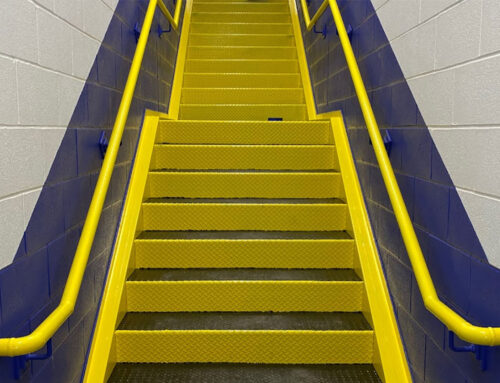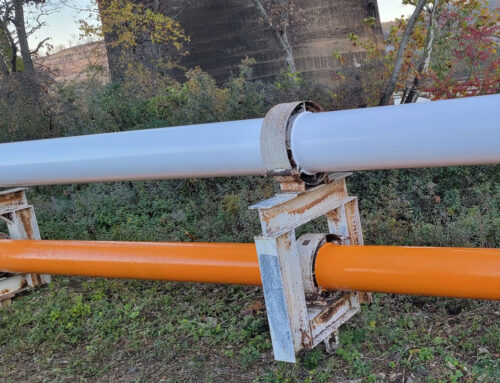Picture a chemical storage tank. Nearly every industry we work with has one: power plants, manufacturing, oil and gas, pharmaceuticals, food and beverage. Whether they store raw materials, refined products, water, or chemical byproducts, storage tanks will corrode, pitting just like any other kind of industrial equipment.
Refurbishment will almost always be less costly and less disruptive than replacement. To get started, a team of industrial painters will assess the surface and then decide what type of metallizing technique would produce the optimal result for longevity and conductivity. Here is a quick overview of the metallizing techniques our industrial painters use.
- Flame Spray MetallizingTypically we use flame spray metallizing in power plant components, offshore oil drilling, aircrafts, bridges, and ships. Aluminum, zinc, their alloys, and ceramic are the most common choices for flame spray metallization projects. Our industrial painters use a powder or a wire, melt it with a combustion flame, propel droplets of the molten metal with compressed air, and spray it onto the substrate.
- High Velocity Oxygen Fuel (HVOF) MetallizingArguably the most versatile metallizing technique, our industrial painters use HVOF in every industry we service. A spray gun is loaded with powdered metal where a combustible mixture of oxygen and fuel create a high velocity flame. The result is a uniquely uniform coating with unmatched adhesion. Bonus: HVOF is compatible with a high number of metals and alloys.
- Arc Spray MetallizingThis technique uses metallic wire feedstock, a rod-like form of high-quality pure metal or alloy. Industrial painters feed it into an arc spray gun where an “arc” is created between two electrodes, melting the wire into metal droplets and spraying them onto the substrate. The main benefit of arc spray metallization is how cost-effective it is. It is a go-to technique for storage tanks and pipelines.
- Detonation Gun Metallizing (D-Gun)Similar to HVOF, D-Gun uses a high-speed combustible oxygen-fuel combination to spray metals and alloys onto steel surfaces. The key difference between the two is how the two techniques deploy materials. During the D-Gun process, its fuel generates a detonation wave to propel molten droplets and create an extremely high density coating. This technique is commonly used in oil and gas and manufacturing.
- Plasma Spray MetallizingA plasma torch uses a noble gas, usually helium or argon, along with separate gas, either nitrogen or hydrogen. An electrical circuit forms between two electrodes within the plasma torch, ionizing the noble gas that carries the plasma and forming a 27,000-degree arc. As the gas expands into a high-speed jet, an industrial painter inserted powdered feedstock material, spraying it onto the substrate. Plasma spray metallizing is often used power plants, renewable energy facilities, oil and gas, and industrial manufacturing.
Learn More About Metallizing and How Industrial Painters Use It
Metallization provides considerable benefits to almost any steel structure. Schedule an on-site inspection with the industrial painters at Eagle Eye Services and discover how we can preserve your industrial business’ equipment with a new metallizing project.
You may also be interested in:
Ready to Get Started?
Have questions about your project or need a quote? We’ve got someone ready to help you.



